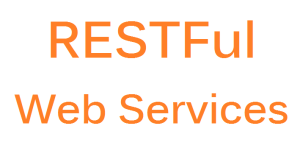 21.What are the disadvantages of statelessness in RESTful Webservices?
21.What are the disadvantages of statelessness in RESTful Webservices?
Following is the disadvantage of statelessness in RESTful web services −
Web services need to get extra information in each request and then interpret to get the client’s state in case client interactions are to be taken care of.
22.What do you mean by idempotent operation?
Idempotent operations means their result will always same no matter how many times these operations are invoked.
23.Which type of Webservices methods are to be idempotent?
PUT and DELETE operations are idempotent.
24.Which type of Webservices methods are to be read only?
GET operations are read only and are safe.
25.What is the difference between PUT and POST operations?
PUT and POST operation are nearly same with the difference lying only in the result where PUT operation is idempotent and POST operation can cause different result.
26.What should be the purpose of OPTIONS method of RESTful web services?
It should list down the supported operations in a web service and should be read only.
27.What should be the purpose of HEAD method of RESTful web services?
It should return only HTTP Header, no Body and should be read only.
28.What is caching?
Caching refers to storing server response in client itself so that a client needs not to make server request for same resource again and again. A server response should have information about how a caching is to be done so that a client caches response for a period of time or never caches the server response.
29.Which header of HTTP response, provides the date and time of the resource when it was created?
Date header provides the date and time of the resource when it was created.
30.Which header of HTTP response, provides the date and time of the resource when it was last modified?
Last Modified header provides the date and time of the resource when it was last modified.